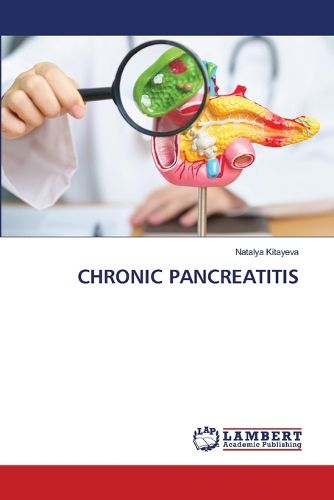Readings Newsletter
Become a Readings Member to make your shopping experience even easier.
Sign in or sign up for free!
You’re not far away from qualifying for FREE standard shipping within Australia
You’ve qualified for FREE standard shipping within Australia
The cart is loading…






The concept of "chronic pancreatitis" (CP), according to modern concepts, means a chronic polyetiological inflammatory and degenerative process in the pancreas, characterized by a fairly long course. It is the result of the effect of activated pancreatic enzymes on the parenchyma and stroma of the gland with permanent destruction, progressive atrophy, replacement of cellular elements of the parenchyma with connective tissue, the appearance of pseudocysts, calcification of the gland, and a decrease in its exo- and endocrine function. Since the inflammatory component in the development of CP is not the only or even the leading one, then, according to W. Hess (1969), this disease would be more correctly defined as "pancreatopathy". CP does not have pathognomonic clinical symptoms, which greatly complicates its diagnosis. Difficulty in diagnosis is also due to the frequent combination of damage to the pancreas with pathology of other organs of the digestive tract. This is mainly due to the development of CP against the background of diseases of the digestive system or the involvement of the digestive organs in the pathological process with existing CP.
$9.00 standard shipping within Australia
FREE standard shipping within Australia for orders over $100.00
Express & International shipping calculated at checkout
The concept of "chronic pancreatitis" (CP), according to modern concepts, means a chronic polyetiological inflammatory and degenerative process in the pancreas, characterized by a fairly long course. It is the result of the effect of activated pancreatic enzymes on the parenchyma and stroma of the gland with permanent destruction, progressive atrophy, replacement of cellular elements of the parenchyma with connective tissue, the appearance of pseudocysts, calcification of the gland, and a decrease in its exo- and endocrine function. Since the inflammatory component in the development of CP is not the only or even the leading one, then, according to W. Hess (1969), this disease would be more correctly defined as "pancreatopathy". CP does not have pathognomonic clinical symptoms, which greatly complicates its diagnosis. Difficulty in diagnosis is also due to the frequent combination of damage to the pancreas with pathology of other organs of the digestive tract. This is mainly due to the development of CP against the background of diseases of the digestive system or the involvement of the digestive organs in the pathological process with existing CP.